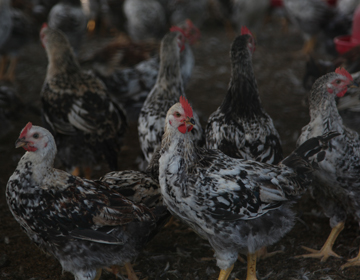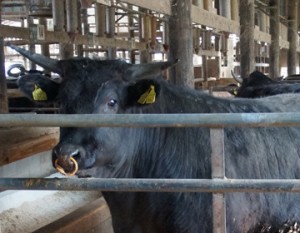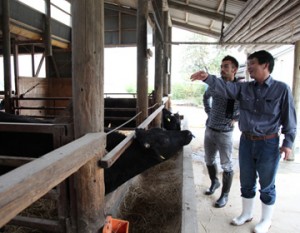Switching from landscaping to animal husbandry
Just as ”sake” has local brands, there are local brands of chicken as well. Chicken such as ”Nagoya Cochin” or ”Miyazaki Jidori” are famous, but Aizu has ”Aizu Jidori”. Kazuhiro Kodaira raises this local chicken for poultry.
Aizu Jidori is said to have originated when a fleeing Heike samurai brought a chicken as a pet which later spread. In recent years, the breed was forced to the brink of extinction. However, several surviving chickens were found in 1987, and the original species have been raised and maintained at the Fukushima Prefecture Poultry Experiment Station.
In order to raise Aizu Jidori and commercialize them for consumption, a certified Poultry Processing Sanitation Supervisor is needed. In their search for the qualified person, they discovered Kodaira, who had studied at the Department of Animal Science at Tokyo Agricultural University. ”I was asked to take on this task because I happened to be qualified.” he told us laughing. He took over the Poultry Processing Facilities in Mishimacho. Eventually, he also began raising the chickens so that he could control the entire process in growing delicious chicken.
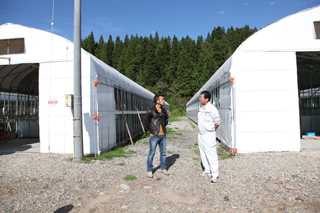
Healthy clucking sounds echo throughout
Kodaira showed us the chicken coop. It looked different from what you would imagine from the words ”chicken coop”. It looked more like a plastic greenhouse and looked quite tidy. The inside of the chicken coop was quite simple and clean. We also observed the smaller house where the chicks were boarded, and Nakata commented ”It looks like a sandbox where kids play.”
Something else that caught our attention was the energetic clucking that echoed throughout the chicken coop. When we mentioned this, Kodaira explained his belief toward raising chickens. ”If the chicken are not energetic, it can’t be passed on to us humans.”
In order to create that energy, the chicken coop is only loosely managed, keeping it close to natural as much as possible. While the physical condition of the chicken changes during the cold season and the hot season, the flavor must be maintained throughout the year. We were told that that was quite a challenge.
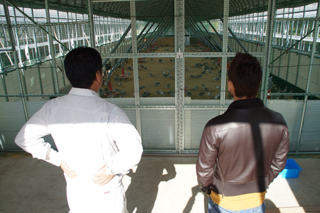
The ”umami” seems to be everlasting
When asked what kind of poultry he aims to produce, he told us ”meat that overflows with flavor when you chew it”. He made a charcoals fire and let us have a taste for ourselves.
”The sweetness is amazing.”, Nakata and his entourage enjoyed one piece after another. Hearing that comment, Kodaira explained ”That’s the sweetness of the fat”. The characteristics of Aizu Jidori is that sweetness and the ”umami” flavor. The more you chew, the more those flavors overflow in your mouth.
”For many people who do not like chicken meat, it’s the smell they don’t like. Our chicken doesn’t have that smell.” Both the breast and thigh have no dryness and are quite juicy. And most of all, the tastiness overflows when you bite into the meat.
Towards a local chicken that surpasses Japan’s top three chickens
Hearing direct compliments from the customers about how delicious it is brings joy and excitement. The Three Great Japanese Chickens – Hinai-dori, Nagoya Kochin, Miyazaki Jidori. Kodaira shared his strong desire to create a local chicken that surpasses all of them.




